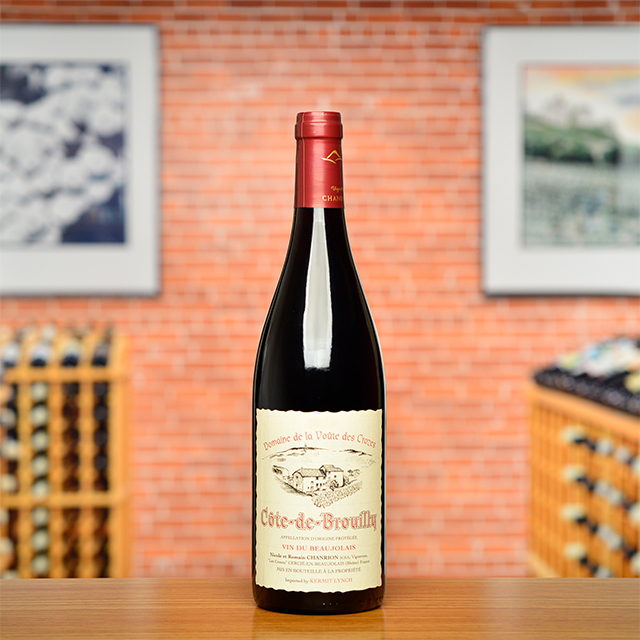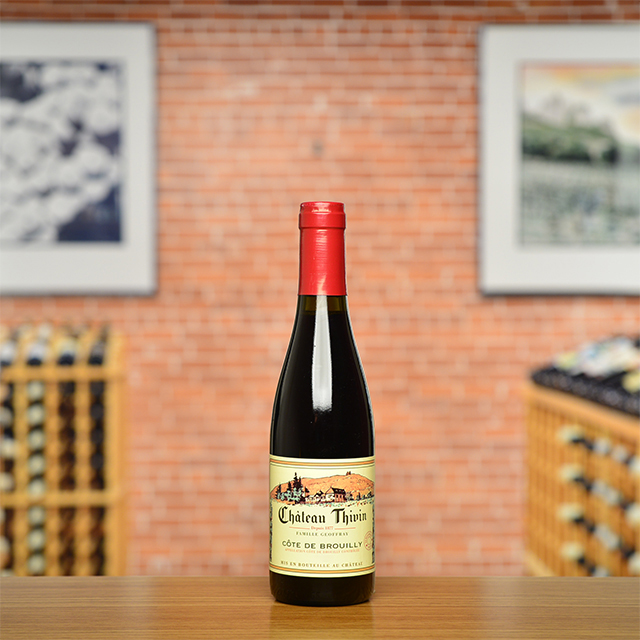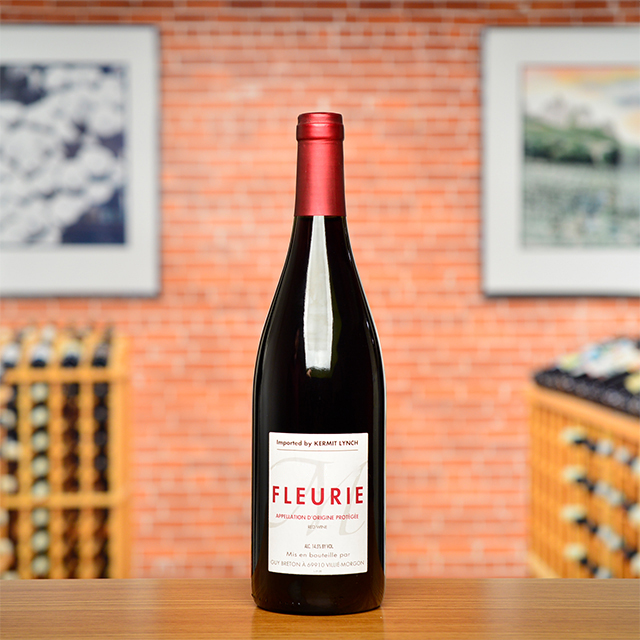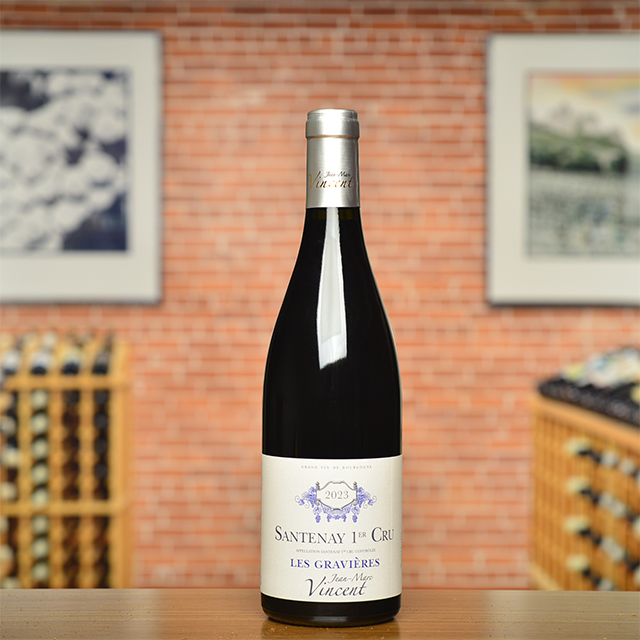Notify me
2023 Chénas “Chassignol”
Domaine Thillardon
A finessed, mineral-driven beauty from hundred-year-old vines at the highest point in Chénas, on a steep granite incline overlooking the Thillardon winery.
—Anthony Lynch
| Wine Type: | red |
| Vintage: | 2023 |
| Bottle Size: | 750mL |
| Blend: | Gamay |
| Appellation: | Chénas |
| Country: | France |
| Region: | Beaujolais |
| Producer: | Domaine Thillardon |
| Winemaker: | Paul-Henri Thillardon |
| Vineyard: | Planted in 1920-1936; 3 ha |
| Soil: | Pink granite |
| Farming: | Organic (certified) |
| Alcohol: | 12.5% |
More from this Producer or Region

2023 Chénas “Les Blémonts”
France | Beaujolais
Structured yet full of energy, with notes of blueberry, spice, and other things nice.

2024 Beaujolais MAGNUM
France | Beaujolais
This Beaujolais offers the drinkability of the most effusive Morgons with the frankness of a chiseled Moulin-à-Vent.

2024 Côte-de-Brouilly
France | Beaujolais
Loads of fun—juicy, round, structured, yet always elegant and focused. A classic favorite.

2023 Chénas “Vibrations”
France | Beaujolais
Its shimmering red fruit comes alive with a nice chill.

2024 Côte de Brouilly HALF BOTTLE
France | Beaujolais
Loaded with wild fruit, spice, and crunchy minerality, Thivin's Côte de Brouilly marries to perfection with soulful cuisine.

2023 Fleurie
France | Beaujolais
Light and living, charged with herbs, cranberry, and strawberry.

2024 Fleurie
France | Beaujolais
Guy Breton’s Fleurie is delicate, with buffed tannins and juicy fruit; it will leave your thirst slaked and your heart feeling light.

2021 Beaujolais Blanc “Terrain Rouge”
France | Beaujolais
In classic Thévenet fashion, the wine is bright and energetic—a snappy Chardonnay that tastes like fresh green apple skin with a whisper of gentian.

2023 Moulin-à-Vent “Sous la Roche”
France | Beaujolais
It combines the structural grandeur typical of Moulin-à-Vent with a high-elevation freshness.

2023 Morgon “Vieilles Vignes”
France | Beaujolais
Leave it to Breton to take summer heat and turn it into a light summer breeze in a glass.
About The Producer
Domaine Thillardon
Paul-Henri Thillardon grew up in Beaujolais, where his family grew grapes to sell to the local co-op. He worked in the vines as a kid and aspired to make his own wine. At age twenty-one, he purchased vineyards in the cru of Chénas, seeing potential in an appellation that lacked the talent of Morgon and Fleurie. He farmed organically from the start and soon became exposed to the world of natural wine, taking advice from mentors such as Guy Breton. Paul-Henri’s siblings joined him at the domaine, and today they farm ten hectares of vines on a polyculture farm. The Thillardons have earned a reputation for their silky expressions of Gamay. Utilizing natural methods to create terroir-driven wines, the purity and vibrancy of their cuvées put them in company with the region’s most talented vignerons.
About The Region
Beaujolais

After years of the region’s reputation being co-opted by mass-produced Beaujolais Nouveau and the prevalence of industrial farming, the fortunes of vignerons from the Beaujolais have been on the rise in the past couple of decades. Much of this change is due to Jules Chauvet, a prominent Beaujolais producer who Kermit worked with in the 1980s and arguably the father of the natural wine movement, who advocated not using herbicides or pesticides in vineyards, not chaptalizing, fermenting with ambient yeasts, and vinifying without SO2. Chief among Chauvet’s followers was Marcel Lapierre and his three friends, Jean Foillard, Guy Breton, and Jean-Paul Thévenet—a group of Morgon producers who Kermit dubbed “the Gang of Four.” The espousal of Chauvet’s methods led to a dramatic change in quality of wines from Beaujolais and with that an increased interest and appreciation for the AOC crus, Villages, and regular Beaujolais bottlings.
The crus of Beaujolais are interpreted through the Gamay grape and each illuminate the variety of great terroirs available in the region. Distinguishing itself from the clay and limestone of Burgundy, Beaujolais soils are predominantly decomposed granite, with pockets of blue volcanic rock. The primary vinification method is carbonic maceration, where grapes are not crushed, but instead whole clusters are placed in a tank, thus allowing fermentation to take place inside each grape berry.
Much like the easy-going and friendly nature of many Beaujolais vignerons, the wines too have a lively and easy-drinking spirit. They are versatile at table but make particularly good matches with the local pork sausages and charcuterie. Though often considered a wine that must be drunk young, many of the top crus offer great aging potential.
More from Beaujolais or France
2021 Brouilly
Alex Foillard France | Beaujolais
2024 Morgon “Vieilles Vignes”
Guy Breton France | Beaujolais
2023 Beaujolais Blanc “Clos de Rochebonne”
Château Thivin France | Beaujolais
2025 Beaujolais Nouveau
La Sœur Cadette France | Beaujolais
2024 Chiroubles “Cuvée Léa”
Guy Breton France | Beaujolais
2024 Beaujolais MAGNUM
Domaine Dupeuble France | Beaujolais
2024 Côte de Brouilly HALF BOTTLE
Château Thivin France | Beaujolais
2024 Fleurie “Les Moriers”
Domaine Chignard France | Beaujolais
2024 Morgon “La Roche Pilée”
Jean-Paul et Charly Thévenet France | Beaujolais
2024 Morgon “Vieilles Vignes”
Jean-Paul et Charly Thévenet France | Beaujolais
2022 Côte de Brouilly
Guy Breton France | Beaujolais
2024 Côte de Brouilly MAGNUM
Château Thivin France | Beaujolais
2021 Brouilly
Alex Foillard France | Beaujolais
2024 Morgon “Vieilles Vignes”
Guy Breton France | Beaujolais
2023 Beaujolais Blanc “Clos de Rochebonne”
Château Thivin France | Beaujolais
2025 Beaujolais Nouveau
La Sœur Cadette France | Beaujolais
2024 Chiroubles “Cuvée Léa”
Guy Breton France | Beaujolais
2024 Beaujolais MAGNUM
Domaine Dupeuble France | Beaujolais
2024 Côte de Brouilly HALF BOTTLE
Château Thivin France | Beaujolais
2024 Fleurie “Les Moriers”
Domaine Chignard France | Beaujolais
2024 Morgon “La Roche Pilée”
Jean-Paul et Charly Thévenet France | Beaujolais
2024 Morgon “Vieilles Vignes”
Jean-Paul et Charly Thévenet France | Beaujolais
2022 Côte de Brouilly
Guy Breton France | Beaujolais
2024 Côte de Brouilly MAGNUM
Château Thivin France | Beaujolais
Kermit once said...

Kermit once said...
If you're looking for value, look where no one else is looking.
Inspiring Thirst, page 211




















